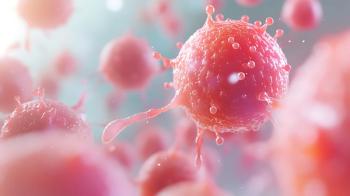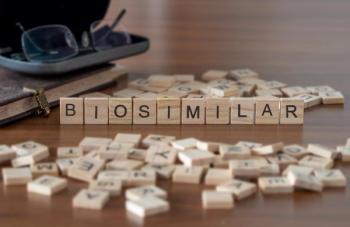
Medication That Inhibits PCSK9 Reduced CVD Risk in T2D Patients
The results of the ODYSSEY-Diabetes trials focused on alirocumab, an approved monoclonal antibody that prevents PCSK-9 protein from impairing the liver’s receptors, and that antibody's effect on type 2 diabetes (T2D).
PCSK9 inhibitors help reduce low-density lipoprotein (LDL) cholesterol levels as well as non-high-density lipoprotein cholesterol (non-HDL-C) in patients with type 2 diabetes, according to data presented at the
The results, which were part of the ODYSSEY-Diabetes trials focused on alirocumab (Praluent, Sanofi/Regeneron), an approved monoclonal antibody that prevents
The ODYSSEY-DM Insulin Trial is an international phase 3, randomized, double-blind, placebo-controlled, study conducted at 108 centers across the United States and Europe.1 This study concluded that that patients with T2D taking alirocumab, along with the maximum tolerable dose of statins, saw a 49% drop in low-density lipoprotein (LDL) cholesterol, compared with those on placebo. Eighty percent of patients in the treatment arm achieved their LDL cholesterol goals on the 75 mg dose; others had their dose increased to 150 mg.
Dyslipidemia Study Results
Another trial presented at the ADA meeting was a randomized, open-label, parallel group study that focused on evaluating the efficacy and safety of alirocumab versus standard care (either no additional lipid lowering therapy or ezetimibe, fenofibrates, omega-3 fatty acids, nicotinic acid ) in patients with T2D and mixed dyslipidemia who were at high cardiovascular risk (established atherosclerotic CVD (ASCVD) or at least one other cardiovascular risk factor) with non-high-density lipoprotein cholesterol (non-HDL- C) not adequately controlled with the maximum tolerated dosage of statin therapy.
2
Mixed dyslipidemia was defined as elevations in non-HDL cholesterol and triglyceride levels that are often accompanied by low levels of HDL cholesterol.
After 24 weeks of treatment, data indicate that alirocumab significantly reduced the non-high-density lipoprotein cholesterol (non-HDL-C) by 32.5% compared to usual care. Additionally, patients who received alirocumab had improvement in other lipid parameters compared to the patients in the usual care group, and the majority of patients in the alirocumab group reached the recommended lipid levels on the 75 mg dose. The number of adverse events was generally similar between the two treatment arms. Further, alirocumab was generally well tolerated and did not affect glucose control.
Cardiologists and endocrinologists have complained that payers have made access to PCSk9 inhibitors difficult, even for patients who seem to meet the criteria. Both groups of patients in the studies presented Sunday are at high risk of cardiovascular disease; in an interview, officials with Sanofi said that value of alirocumab in safely reducing cardiovascular risk among the highest-risk patients—and particularly among those with diabetes—would be part of a message to payers.
“A patient who has had a recent (cardiovascular) event is high risk,” said Jay Edelberg, MD, PhD, vice president for Sanofi’s PCSK9 inhibitor Strategic Development & Launch Unit. “If that patient also has diabetes, that patient has the highest risk we know.” With these studies, he said, there is now evidence that the highest risk patients can be treated with something that is effective, and “very, very safe,” he said.
References
1. Inhibition of PCSK9 in Dyslipidemia Patients with Diabetes. Presented at: The American Diabetes Association’s 77th Scientific Sessions, June 9-13, 2017. San Diego.
2. Efficacy and Safety of Alirocumab Versus Usual Care on Top of Maximally Tolerated Statin Therapy in Patients With Type 2 Diabetes and Mixed Dyslipidemia (ODYSSEY DM-Dyslipidemia). Presented at: The American Diabetes Association’s 77th Scientific Sessions, June 9-13, 2017. San Diego.
Newsletter
Stay informed on drug updates, treatment guidelines, and pharmacy practice trends—subscribe to Pharmacy Times for weekly clinical insights.









































































































































































































